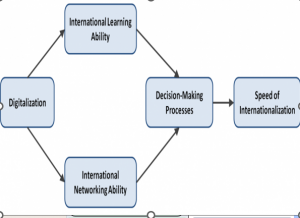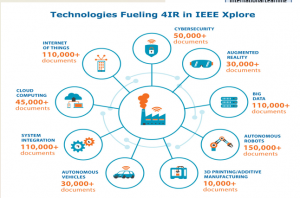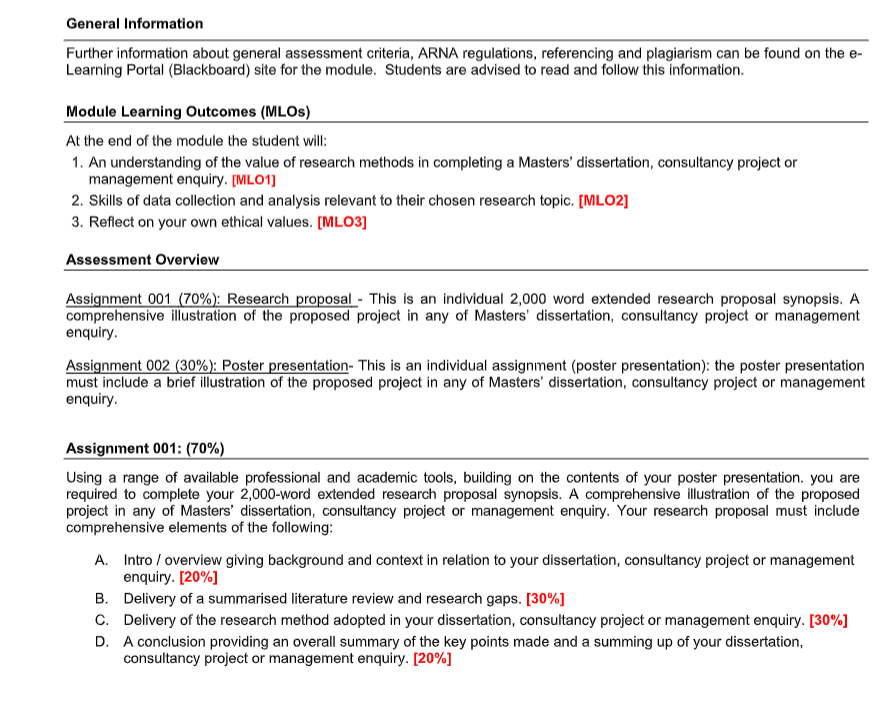LD9718 Research Methods and Analytics for Business Practice
INTRODUCTION:
The Information and Communication Technology has attained global acknowledgment and use today. Many experts consider that the Global Information Technology framework is in its budding stages yet has begun to transfer the world. Businesses that were faced with the challenge of distance and time, today have access to a wide consumer and supplier base. ITC at the global level, is transforming how the world does business.
The business strategies have changed to accommodate and make use to the technological trends to improve their visibility and popularity. Under the scope of this paper, we seek to study how virtual working and running of numerous organizations is a viable mode of doing business across national and regional borders.

We shall study how different technological trends have impacted businesses around the world and given a boost to global competition. “As e-commerce continues expanding, its impact on employment and wages will be the result of a complex set of interactive forces. Electronic commerce is expected to directly and indirectly create new jobs as well as cause job losses.
New jobs will be gained in information-related goods and services, entertainment, software and digital products, for instance. Indirect creation of jobs will occur via increased demand and productivity. Jobs will be lost when e-commerce substitutes for the traditional way of doing business(Clifton, J. 2011). The jobs most likely affected, as preliminary evidence suggests, are those in the retail sector, postal offices and travel agencies. However, the effects will not be uniform across countries, geographic areas, industries or skill group” (Ford, M. 2015).
DESIGN & STRUCTURE OF THE ORGANISATION AND DIGITISATION:
The revolution of information technology has not only been large scale, but it is also irreversible and pervasive, and the world must learn to live with it. Many businesses and states learnt at a very early stage, the benefits that digitization could bring with it. Thus, they pushed for it leading to the internationalization of businesses and creation of a globally competitive market. The digital economy is also known as the Internet economy or the electronic economy. In the digital world, things happen at a very quick rate and thus, businesses must be ready to accommodate to changes as soon as they happen.

The companies working in the digital world, must be ready to instantly grab opportunities as well as to deal with threats. These organization must have a wide global strategy if they plan on expanding their markets while working from their headquarters in one country but operating in multiple countries at one time. Many large companies operate with this method as their prime strategy including Honda, Volvo, Nissan, etc.
Opting an international strategy means competing with other international players in the digital market economy against the local competitors solely prior to the digital era. It established a horizontal trading structure by establishing strategic operational links in countries where the organizations spread their business.
According to Hedlung and Rolander, firms will be able to perform exceedingly well, if they can deal effectively with the challenges of global efficiency, responsiveness, competence and learning in the digital accompany. (Fowler, J. 2016, February 10).
UNDERSTANDING IT TRENDS WITH RELATION TO INTERNATIONALISATION OF BUSINESS
TRANSNATIONAL VIRTUAL ORGANIZATIONS:
A virtual organization can not function independently. It is based on a network on dependent partnerships and alliances with other organizations. Virtual Organizations are based on coordination of a wide variety of IT services as well (Triple Pundit: People, Planet, Profit. 2015, October. 8) It is only information technology that is capable of transforming the identity of organizations and make the traditional form of markets obsolete. Transnational Virtual Organizations must fulfil the following three criteria:
- Quick and critical response to Technology.
- Competence to deal with challenges and
- Efficiency to perform core functions in an efficient manner.
ENTERPRISE RESOURCE PLANNING:
This is the integration of several back-office functions that get customized and connected to all the existing functional areas and processes of the business. It is an integrated software package that promotes efficiency, learning and responsiveness. These software packages enable businesses serving internationally to perform a wide variety of functions, for instance, “product planning, parts purchasing, inventory maintenance, supplier interaction, customer service and order tracking”. These packages are dominating the global digital market by helping corporations to transform into transnationalism.
SUPPLY CHAIN MANAGEMENT:
Supply chain management is the system of managing the flow of goods, services, money, and information as part of a business transaction. Previously, the same happened physically, today the process of Supply chain management takes places virtually. It is monitoring how raw materials become finished products and reach the end user (World Economic Forum. 2015). It helps in ensuring customer satisfaction and in gaining a competitive edge in the market.
TECHNOLOGIES FOR CUSTOMER RELATIONSHIP MANAGEMENT(CRM):
Customer Relationship Management is an integral part of any business. In an offline environment, the business owners and managers are able to directly interact and build bonds with the consumers. However, it is not so in a digital environment. Therefore, in a virtual market, businesses use technologies that allow them to organize, automate and synchronize different aspects of interaction with customers. It includes pre and post sales support, customer service, marketing, and advertising.
E COMMERCE:
E-commerce refers to the buying and selling of goods, services, and information electronically through the use of internet. The world of e-commerce has progressed so much that today we can purchase stocks and shares of companies virtually and trade on stock exchanges internationally. We can pay for various goods and services using electronic currencies and wallets. E-commerce is seen as the fundamental means through which businesses can expand into the international market at a rapid rate (Stanford University. (2016).
This has led to the creation of not only digital corporations but an entire industrial order which is based on information technology for its functioning. E-commerce has a strategic advantage over traditional means of commerce as it can help consumer filter products according to their demands and decide for themselves in their own time. E-commerce platforms also have an advantage as they can notify consumers as soon as new products hit the markets, create customized knowledge about consumer behavior and define consumer trends. The banking sector has also been transformed by e-commerce and digitization. Most banking functions can be performed from the comfort of the homes of the clients through computers and mobile phones. These transnational corporations encourage digital payments in their transactions as well.
EXTRANETS PACKAGES:
Extended Intranets are secured internet-based connections that allow partners in business to have access to each other’s intranet. These are also a key component of supply chain management by virtue of which businesses are able to have information regarding orders and delivery of various shipments. Companies like FedEx, UPS, DHL use these extranet services. Thus, they are able to respond to consumers when the consumers seek information. Most e-commerce websites allow the consumers themselves to track important details regarding a shipment.
GROUPWARE TECHNOLOGIES:
As the name suggests, Groupware technologies allow different people or even different groups to come together and collaborate and coordinate on a project. It includes access to a wide range of products. Three important categories of Groupware include:
- Communication tools
- Conferencing tools
- Collaborative management tools
internet based services boosting internationalisation of business
Under the scope of this assignment we are listing out certain business activities which we find on the internet or by virtue of the internet. Most e commerce entities make use of these facilities.
- Access Provider: Access providers are those business entities that ensure access to smooth internet upon being paid for internet services.
- Search engine: these are the most used software in the Internet regime. They are initiation stage for almost all transactions that place online. In a traditional business environment, these were called “yellow pages” where all relevant details of the businesses, their contact information, location, etc. were laid down.
- Online Shop: Online shop is a more casually used term for an e-commerce website where the goods and/or services are actually bought and sold. There are wide variety of e commerce websites today selling everything from clothes and books to furniture, precious jewelry, or common stocks.
- Content Provider: content providers make content easily accessible on the internet such as e newspapers, YouTube videos, Instagram reels, etc. There are also information brokers who trade information over the internet.
- Portal: Portal is a website that provides a wide variety of services to a business. It is a single point access to a combination of services put together for the use of an enterprise or corporation at a single destination without having to toggle between different applications.
- Online marketplace/electronic mall: An online marketplace or electronic mall is a just like a traditional market where several suppliers or sellers can come together and conduct business, but only online. It is a set of many shops on the website giving it the appearance of a mall.
- Virtual community: Virtual community is basically a platform for exchange of reviews or experience on some e commerce website. Buyers from all over the world can communicated here and interact to know about the services of a particular seller or supplier (Manyika, J., Chui, J., Bughin, J., Dobbs, R., Bisson, P., & Marrs, A. (2013, May).
- Information broker: He is a person who trades information by first collecting, aggregating, and then sharing information. It can be regarding certain products, their prices, reviews etc.
- Transaction broker: Transaction broker is someone who executes transaction of sale. They act as an intermediary between the seller and the buyer. He acts like a salesman does in an offline market.
- Online Service Provider: This refers to companies that provide services online and electronically like cloud services for storage, back up or disaster recovery.
CONCLUSION:
The information technology and communications backed by the web has revolutionalised business and given it an international standing. The integration of information technology with business has enriched the global business experience. Due to change in marketing patterns, credited to technology, consumers are able to make aware and informed choices.
The consumers from all around the world can shop according to their time zones, without travelling distant places or waiting in ques. The competition is now at a global level so businesses are bound to provide better quality of services. However, there continue to be certain risks. Security risks such as data theft, identity theft, third person abuse and other privacy issues continue to be a major cause of concern.
For the businesses, today they have wider visibility and customer base. There are no intermediaries involved who are willing to steal the profits of the businesses if the businesses choose to operate through their own websites and not under some e commerce website.
Better and low-cost customer service can be provided by outsourcing work to smaller countries. However, the cost of logistics is much higher today. Anonymity of customers and absence of inter-personal relationship, businesses face much uncertainty as products are shipped to distant places to persons who may refuse to take delivery of the same.
Thus, “Internet will promote international trade much as lifting other trade barriers would. Thus, the volume of international trade will increase via e-commerce. The countries open to imports from high-income economies will benefit from knowledge spillovers. E-commerce can also have a significant impact on trade in services.
In addition, electronic commerce is also expected to directly and indirectly create new jobs as well as cause job losses. New jobs will be generated in the information and communication technologies sector, while the indirect creation of jobs will occur via increased demand and productivity. The net employment gains and losses will depend on the demand for certain skills.”
REFERENCES:
- Maury, M., & Kleiner, D. (2002). E-Commerce, Ethical Commerce? Journal of Business Ethics, 36(1/2), 21-31. Retrieved May 7, 2021, from http://www.jstor.org/stable/25074690
- DeLone, W., & McLean, E. (2004). Measuring e-Commerce Success: Applying the DeLone & McLean Information Systems Success Model. International Journal of Electronic Commerce, 9(1), 31-47. Retrieved May 7, 2021, from http://www.jstor.org/stable/27751130
- Fienberg, S. (2006). Privacy and Confidentiality in an e-Commerce World: Data Mining, Data Warehousing, Matching and Disclosure Limitation. Statistical Science, 21(2), 143-154. Retrieved May 7, 2021, from http://www.jstor.org/stable/27645745
- Pavlou, P. (2003). Consumer Acceptance of Electronic Commerce: Integrating Trust and Risk with the Technology Acceptance Model. International Journal of Electronic Commerce, 7(3), 101-134. Retrieved May 7, 2021, from http://www.jstor.org/stable/27751067
- Chatterjee, D., Grewal, R., & Sambamurthy, V. (2002). Shaping up for E-Commerce: Institutional Enablers of the Organizational Assimilation of Web Technologies. MIS Quarterly, 26(2), 65-89. doi:10.2307/4132321
- Reiley, D., & Spulber, D. (2001). Business-to-Business Electronic Commerce. The Journal of Economic Perspectives, 15(1), 55-68. Retrieved May 7, 2021, from http://www.jstor.org/stable/2696539
- McKnight, D., Choudhury, V., & Kacmar, C. (2002). Developing and Validating Trust Measures for e-Commerce: An Integrative Typology. Information Systems Research, 13(3), 334-359. Retrieved May 7, 2021, from http://www.jstor.org/stable/23015741
Know more about UniqueSubmission’s other writing services:


